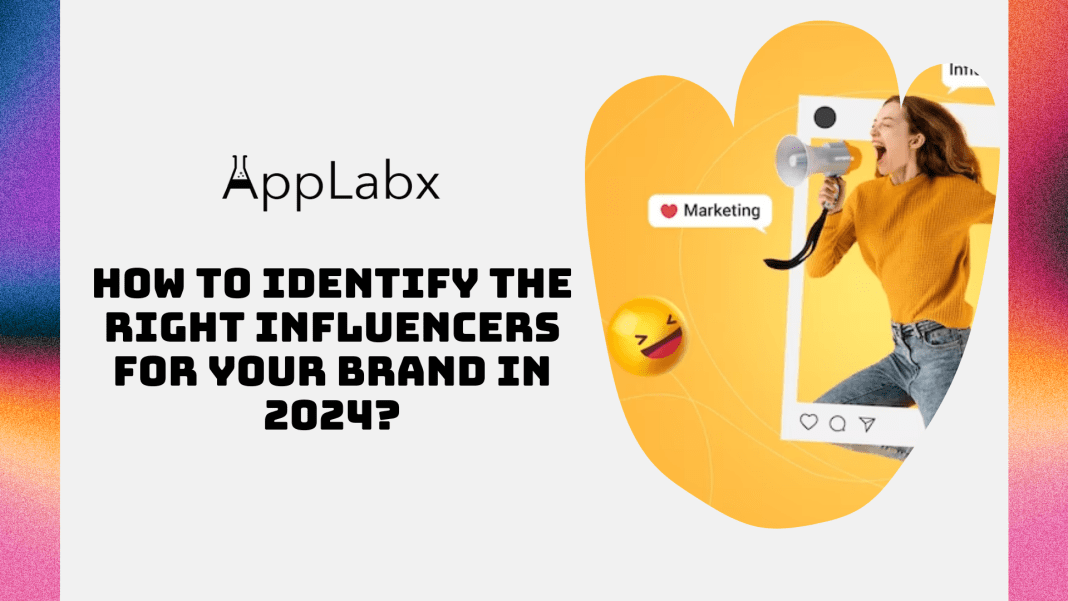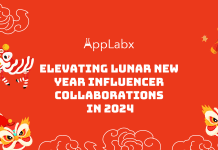Key Takeaways
- Strategic Selection for Impactful Collaborations: Navigate the influencer landscape in 2024 with strategic precision, ensuring your brand collaborates with influencers aligned with its values and goals.
- Authentic Relationships Drive Brand Success: Learn the art of fostering genuine connections with influencers, elevating your brand’s authenticity and trust, key elements in the ever-evolving digital marketing landscape.
- Adaptability in the Dynamic Influencer Landscape: Stay ahead in 2024 by adapting to emerging trends, leveraging diverse influencer categories, and understanding the legal and ethical considerations that shape successful influencer marketing strategies.
In the ever-evolving landscape of digital marketing, staying ahead of the curve is paramount for brands looking to make a significant impact. As we step into 2024, one strategy continues to dominate the scene – influencer marketing.
Leveraging the power of influential individuals to amplify brand messages has proven to be a game-changer, fostering authentic connections with diverse audiences across various niches.
In this comprehensive guide, we delve into the intricate process of identifying the right influencers for your brand in 2024.
As the digital realm undergoes constant transformation, understanding the dynamics of influencer marketing becomes not just a competitive advantage but a necessity for sustained success.

The Significance of Influencer Marketing in 2024
As traditional advertising channels face challenges in capturing the attention of today’s consumers, influencer marketing emerges as a beacon of authenticity and reliability.
Influencers, ranging from mega-influencers with massive followings to nano-influencers with niche appeal, wield the power to sway opinions and shape purchasing decisions.
This blog explores the profound impact influencers can have on your brand, providing insights into navigating the intricate world of influencer identification in the current year.
Navigating the Influencer Landscape
Before delving into the specifics, it’s crucial to understand the diverse ecosystem of influencers that now populate social media platforms.
Mega-influencers, once the primary focus of influencer marketing, now share the stage with an array of personalities – from macro-influencers catering to specific demographics to micro and nano-influencers with hyper-focused communities.
We’ll uncover the unique advantages each category brings to the table and guide you on aligning your brand with the influencers best suited to convey your message.
Defining Your Brand for Influencer Collaboration
Successful influencer partnerships begin with a deep understanding of your brand identity and values.
We’ll walk you through the process of defining your brand, identifying your target audience, and establishing clear goals for influencer collaboration.
This foundational step is pivotal for ensuring that influencers not only resonate with your brand but also contribute meaningfully to your overarching marketing objectives.
As we embark on this journey into the realm of influencer marketing, brace yourself for a wealth of knowledge and actionable insights.
Whether you’re a seasoned marketer or a budding entrepreneur, this guide is crafted to equip you with the tools and knowledge needed to navigate the influencer landscape in 2024 and beyond.
Let’s dive in and unravel the secrets to identifying the right influencers that will elevate your brand to new heights.
But, before we venture further, we like to share who we are and what we do.
About AppLabx
From developing a solid marketing plan to creating compelling content, optimizing for search engines, leveraging social media, and utilizing paid advertising, AppLabx offers a comprehensive suite of digital marketing services designed to drive growth and profitability for your business.
AppLabx is well known for helping companies and startups use influencer marketing to drive web traffic to their websites and web apps.
At AppLabx, we understand that no two businesses are alike. That’s why we take a personalized approach to every project, working closely with our clients to understand their unique needs and goals, and developing customized strategies to help them achieve success.
If you need a digital consultation, then send in an inquiry here.
How to Identify the Right Influencers for Your Brand in 2024?
- Understanding Your Brand
- Types of Influencers in 2024
- Setting Criteria for Influencer Selection
- Analyzing Influencer Metrics
- Building Relationships with Influencers
- Legal and Ethical Considerations
- Measuring Influencer Campaign Success
1. Understanding Your Brand

Defining Your Brand Identity and Values
In the fast-paced digital era of 2024, a brand’s identity is its most valuable asset.
Establishing a distinctive brand identity involves more than just a visually appealing logo; it’s about encapsulating the essence of your business in a way that resonates with your target audience.
Crafting Your Brand Story
Example: Consider the success story of Airbnb. By focusing on the idea of community and sharing unique travel experiences, Airbnb has created a brand story that goes beyond accommodation, fostering a sense of belonging for both hosts and guests.
Identifying Core Values
- According to a survey by Deloitte, a quarter of consumers are prepared to pay more for sustainability.
- Example: Patagonia’s commitment to environmental sustainability is deeply ingrained in its brand values. This not only attracts environmentally conscious consumers but also strengthens the brand’s identity.

Identifying Target Audience and Demographics
Understanding your target audience is pivotal for influencer marketing success.
In 2024, consumer demographics will be more nuanced, and brands need to tailor their approach accordingly.
Analyzing Demographic Data
- Research from Statista indicates that in August 2023, 27.4 per cent of Instagram users in the United States were aged between 25 and 34 years.
- Example: If your target audience falls within this age group, collaborating with influencers who have a significant following on Instagram could be a strategic move.
Psychographics and Lifestyle Analysis
Example: Starbucks, through its lifestyle-oriented marketing, has successfully identified its audience as individuals seeking not just coffee but a premium and socially engaging experience.
Collaborating with influencers who align with this lifestyle has been integral to their marketing strategy.
Establishing Brand Goals for Influencer Collaboration
Setting clear goals for influencer partnerships ensures that each collaboration contributes to your broader marketing objectives.
Increasing Brand Awareness
- 78% of marketers found that influencer marketing is an effective strategy for increasing brand awareness.
- Example: Fashion brands like Fashion Nova leverage influencers to showcase their clothing lines, significantly boosting brand visibility among their target demographic.
Driving Conversions and Sales
- A study found that 80% of consumers complete a purchase after seeing an influencer recommend that product on social media.
- Example: Kylie Jenner’s collaboration with Kylie Cosmetics exemplifies this, as her influencer status significantly contributes to the brand’s sales success.

Aligning Your Brand with Influencer Categories
Different types of influencers cater to diverse audiences.
Choosing the right category aligns your brand with influencers who can authentically connect with your target market.
Mega-Influencers
Example: Selena Gomez, with over 429 million Instagram followers, has a massive reach. Brands like Coach have successfully collaborated with her for extensive reach and visibility.
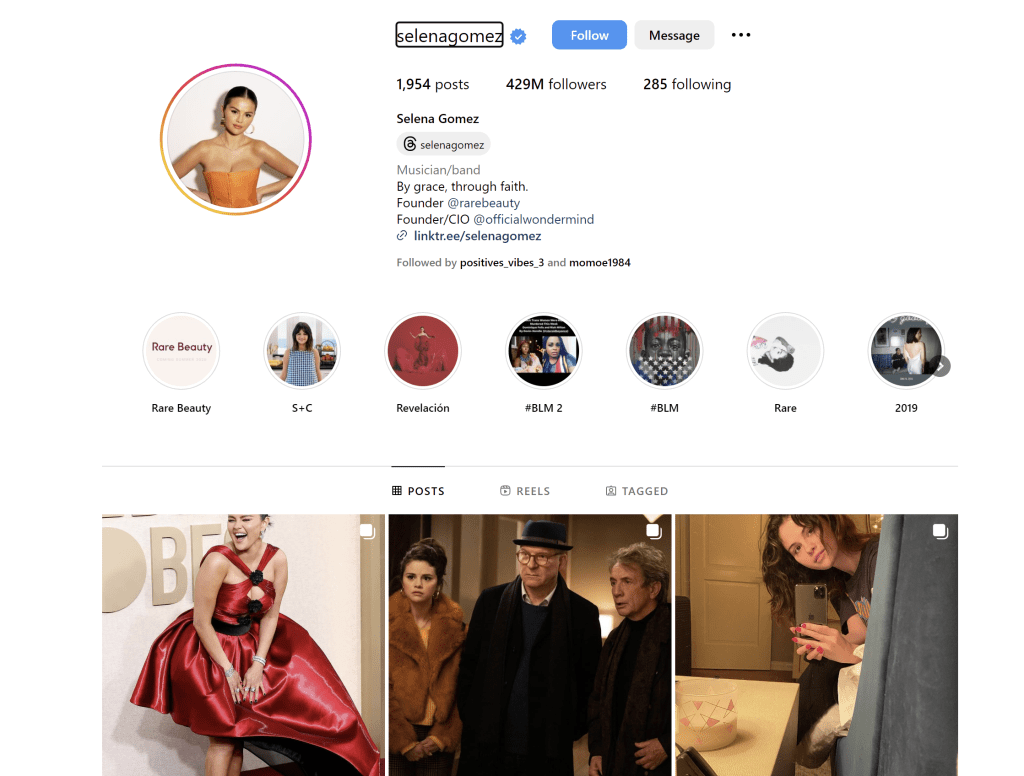
Micro-Influencers
- A report suggests that micro-influencers see a 6% engagement rate on Instagram, while mega-influencers see engagement rates around 1.97%.
- Example: Beauty brands like Glossier often collaborate with micro-influencers to tap into niche communities and build authentic connections.
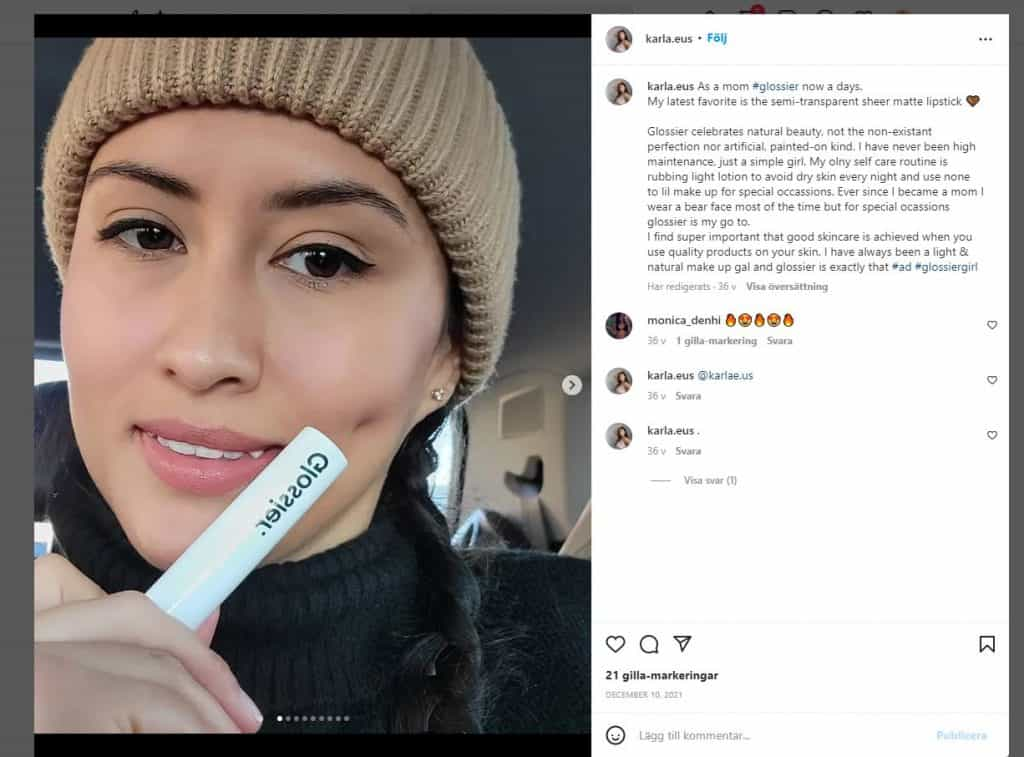
Nano-Influencers
- Nano-influencers have less than 10,000 followers, as a result, they tend to have high engagement rates and niche audiences.
- Example: Local businesses benefit from nano-influencers, such as neighbourhood bloggers or enthusiasts, to create hyper-localized campaigns that resonate with specific communities.
2. Types of Influencers in 2024

Mega-Influencers
Mega-influencers continue to dominate the influencer landscape in 2024, commanding vast audiences and wielding substantial influence over consumer behaviour.
Definition and Reach
- Mega-influencers are individuals with followers exceeding one million across various social media platforms.
- Example: Dwayne “The Rock” Johnson, with over 395 million Instagram followers, epitomizes the colossal reach of mega-influencers.
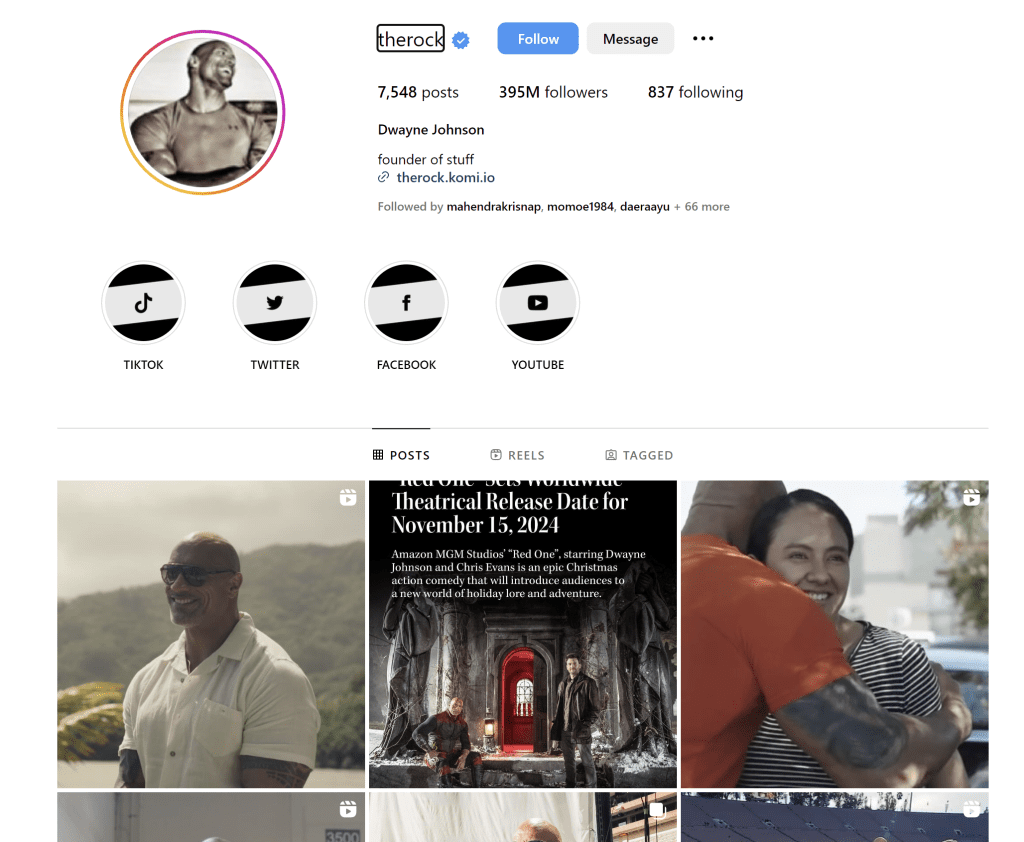
Engagement Challenges
- Despite their extensive reach, mega-influencers often face challenges in maintaining high engagement rates.
- With the increase in the number of followers, the engagement rate of influencers went down.
Macro-Influencers
With a more niche focus than mega-influencers, macro-influencers appeal to specific demographics while maintaining a significant following.
Targeted Appeal
A macro-influencer’s follower count should fall somewhere between 100,000 and one million followers.
Balancing Reach and Engagement
- While not as broad in reach as mega-influencers, macro-influencers often strike a balance between reach and engagement.
- Instagram Influencers with up to 100,000 followers have the highest average engagement rate of 6.89%.
Micro-Influencers
Micro-influencers continue to gain prominence in 2024, offering brands the advantage of a more personal and authentic connection with their audience.
Defined Niches and Authenticity
Micro-influencers typically have follower counts ranging from 1,000 to 100,000, with a focus on specific niches.
High Engagement Rates
- Smaller follower counts often translate to higher engagement rates, fostering genuine connections with their audience.
- Micro-influencers with fewer than 5,000 followers have an average engagement rate of 5.7%.
Nano-Influencers
Nano-influencers, though having the smallest reach, excel in hyper-localized influence, making them valuable for niche and community-centric campaigns.
Community-Centric Influence
- Nano-influencers have a following of fewer than 10,000 people and sometimes will only have 1,000 followers.
- Example: A local artist with 500 followers can effectively promote a neighbourhood event, creating a strong impact within a small community.
Authenticity and Trust
- Nano-influencers are perceived as more authentic, fostering higher levels of trust within their tight-knit communities.
- Nano-influencers often achieve engagement rates of around 8%.
Emerging Trends in Influencer Categories
2024 brings forth new and evolving trends in influencer categories, shaping the landscape of digital influence.
Virtual Influencers
- Virtual influencers, powered by AI, are gaining traction, blurring the lines between reality and digital representation.
- Example: Lil Miquela, a virtual influencer with 2.6 million Instagram followers, collaborates with brands and engages audiences with futuristic storytelling.
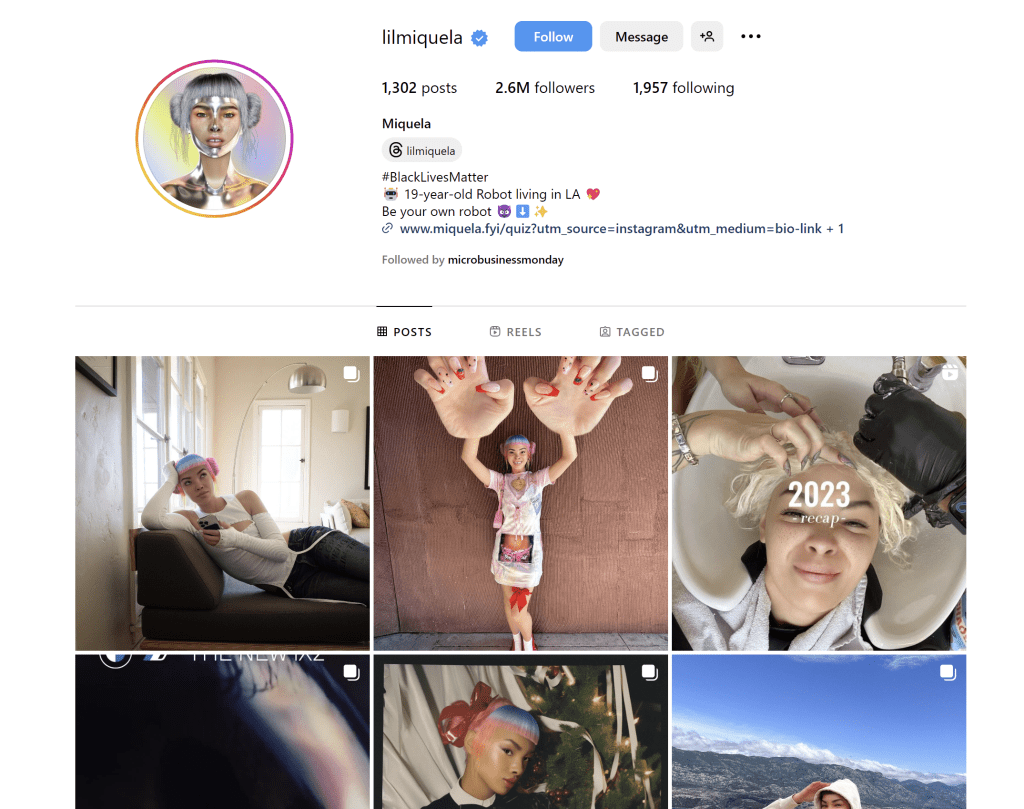
Employee Advocacy
- Brands are increasingly leveraging their own employees as influencers, tapping into their authenticity and passion for the company.
- Content that is shared by employees receives eight times more engagement than content shared by brand channels.
3. Setting Criteria for Influencer Selection

Relevance to Your Brand
Selecting influencers aligned with your brand is essential for building authentic connections with your target audience.
Brand Alignment
- Ensure influencers’ values align with your brand’s identity to maintain authenticity.
- Example: Nike collaborates with athletes like Serena Williams, ensuring a strong alignment with their commitment to athleticism, empowering women, and breaking barriers.

Niche Relevance
- Choose influencers whose content and audience align with your niche for maximum impact.
- 68% of people trust online opinions from other consumers, which places online opinions as the third most trusted source of product information.
Audience Engagement and Authenticity
Beyond follower counts, prioritizing engagement and authenticity fosters meaningful connections.
Engagement Metrics
Prioritize influencers with high engagement rates, as it indicates an active and responsive audience.
Authenticity
- Authenticity is key; look for influencers who genuinely use and believe in your product or service.
- Example: Glossier’s collaboration with beauty influencers who authentically use their products has contributed to the brand’s success.
Consistency in Content Quality
Maintaining a consistent standard of content quality ensures that your brand is represented in the best light.
Content Aesthetics
- Choose influencers whose content aesthetics align with your brand’s visual identity.
- Approximately 64% of customers purchase after watching videos, and 90% of viewers are convinced to buy based on video content.
Content Relevance
- Ensure influencers create content that seamlessly integrates your brand into their existing content themes.
- Example: GoPro collaborates with adventure influencers, ensuring the brand is organically integrated into thrilling, action-packed content.

Social Media Reach and Influence
Considering the influencers’ reach and influence on various platforms is crucial for maximizing exposure.
Platform Compatibility
- Choose influencers whose primary platforms align with your target audience’s preferences.
- Example: For younger demographics, platforms like TikTok may be more effective, while Facebook might be suitable for an older audience.
Follower Demographics
Analyze influencers’ follower demographics to ensure they match your target audience.
4. Analyzing Influencer Metrics

Follower Demographics and Engagement Rates
Understanding an influencer’s audience demographics and engagement rates is crucial for gauging the effectiveness of potential collaborations.
Demographic Insights
Analyze the demographics of an influencer’s followers to ensure alignment with your target audience.
Engagement Rates
High follower counts don’t always translate to high engagement. Evaluate an influencer’s engagement rate to gauge the level of interaction with their audience.
Content Performance and Resonance
Assessing how well an influencer’s content resonates with their audience is key to predicting the success of potential collaborations.
Content Quality Metrics
Evaluate the quality and creativity of an influencer’s content to ensure it aligns with your brand standards.
Audience Interaction
- Examine how frequently an influencer’s audience engages with their content through likes, comments, and shares.
- Example: Successful collaborations often involve influencers who prompt active audience participation through polls, questions, or challenges.
Audience Authenticity and Trust
The authenticity of an influencer and the trust they build with their audience directly impact the success of collaborations.
Authenticity
- Evaluate how authentic an influencer appears in their content and interactions, as authenticity builds trust.
- Example: Lifestyle influencers like Alex Elle, who share personal stories and experiences, build a deep sense of authenticity, fostering trust with their audience.

Trust Metrics
Examine comments, reviews, and sentiment analysis to gauge the level of trust an influencer has established with their audience.
Consistency in Content Quality and Messaging
Consistency in an influencer’s content quality and messaging helps maintain a cohesive brand image.
Visual Consistency
- Ensure an influencer’s visual aesthetics align with your brand, maintaining a consistent visual representation.
- Example: Brands like Apple collaborate with influencers known for their sleek and minimalist visual styles, ensuring consistency with the brand’s image.
Brand Messaging Alignment
Assess whether an influencer consistently aligns their messaging with your brand values and objectives.
5. Building Relationships with Influencers
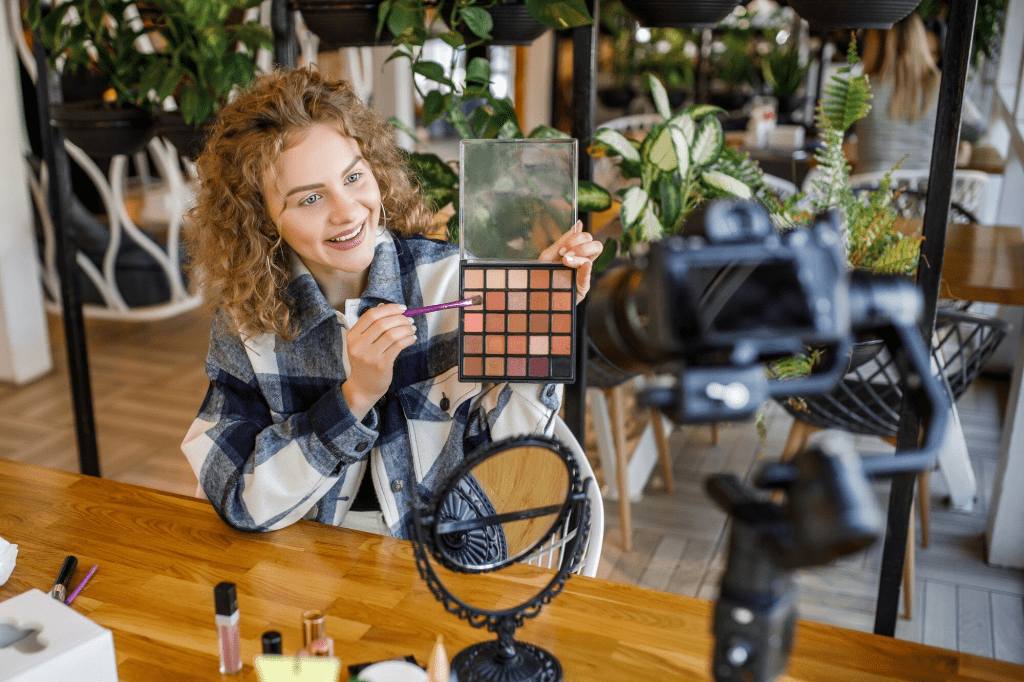
Effective Outreach Strategies
Establishing a meaningful connection with influencers starts with a strategic and personalized outreach approach.
Personalized Communication
- Craft personalized outreach messages that demonstrate a genuine interest in the influencer’s content and align with your brand values.
- Personalized emails have an open rate of 18.8% compared to non-personalized emails, which have an open rate of just 13.1%.
Building Relationships Gradually
- Foster relationships gradually by engaging with an influencer’s content before reaching out for collaboration.
- Example: Brands like Daniel Wellington build relationships by consistently engaging with influencers’ content before proposing collaborations, creating a more authentic partnership.

Negotiating Terms and Compensation
Transparent and fair negotiations are crucial for establishing a mutually beneficial partnership with influencers.
Understanding Influencer Rates
- Research industry-standard rates and understand an influencer’s value based on factors such as follower count, engagement rates, and niche.
- Those with 100,000 or more followers may charge anywhere from $1,000 to $5,000 per Instagram post.
Offering Value Beyond Compensation
- Provide influencers with additional value, such as exclusive access, product previews, or long-term partnerships, to enhance collaboration appeal.
- Example: Fashion brands like Chanel often provide influencers with exclusive previews of new collections, creating a sense of exclusivity.
Collaborative Content Creation and Alignment with Brand Messaging
Ensuring that influencers create content that aligns seamlessly with your brand messaging is key to a successful collaboration.
Content Briefs and Guidelines
Provide influencers with detailed content briefs and guidelines to ensure their content aligns with your brand identity.
Co-Creation Strategies
- Foster a collaborative environment by involving influencers in the creative process, and leveraging their expertise to produce authentic and engaging content.
- Example: GoPro collaborates with adventure influencers, allowing them creative freedom to showcase the brand in real life.
Influencer Loyalty Programs
Building long-term relationships with influencers through loyalty programs can yield sustained brand advocacy.
Exclusive Partnerships
Offer exclusive and ongoing partnerships to influencers who consistently align with and promote your brand.
Rewarding Performance
- Implement performance-based reward systems, incentivizing influencers based on key performance indicators and campaign success.
- Example: Amazon’s influencer program rewards participants with a commission for driving sales through their affiliate links.
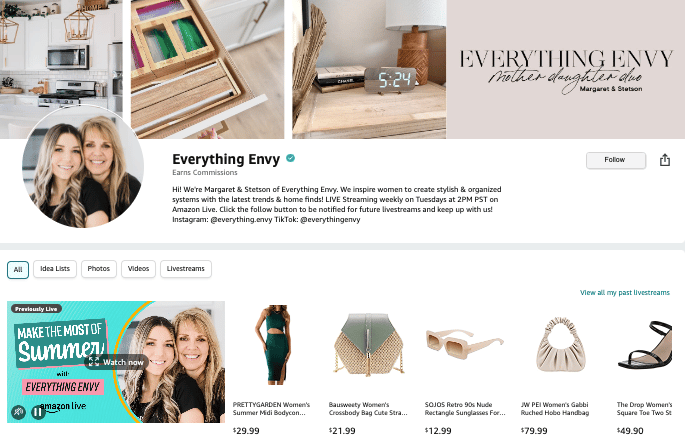
Influencer Events and Experiences
Hosting events or providing unique experiences can strengthen relationships and create memorable collaborations.
Exclusive Events
- Invite influencers to exclusive events, product launches, or brand experiences to deepen the connection.
- Example: Luxury brands like Louis Vuitton often host exclusive events, inviting influencers to share their experiences with their followers.
Creating Shareable Experiences
- Design experiences that influencers can share on their platforms, maximizing reach and engagement.
- 94 per cent of respondents say they are likely to be loyal to a brand that offers complete transparency.
6. Legal and Ethical Considerations

Disclosures and Transparency
Ensuring transparency in influencer marketing is not only ethical but also a legal requirement in many jurisdictions.
FTC Guidelines Compliance
- Familiarize yourself and influencers with the Federal Trade Commission (FTC) guidelines regarding disclosure and endorsement of products.
- Example: In 2019, Lord & Taylor settled charges with the FTC for failing to disclose paid influencer posts promoting a new dress line.
Clear and Conspicuous Disclosures
Emphasize the importance of clear and conspicuous disclosure language to inform audiences about the paid nature of influencer content.
Compliance with Advertising Regulations
Adhering to advertising regulations is essential to avoid legal consequences and maintain a positive brand reputation.
Local and International Regulations
- Be aware of and comply with local and international advertising regulations, ensuring that influencer collaborations adhere to legal standards.
- Example: The Advertising Standards Authority (ASA) in the UK enforces rules on social media advertising, and non-compliance can result in sanctions.
Ensuring Truthful Representations
Educate influencers on the importance of truthful representations of products and services to avoid misleading consumers.
Protecting Your Brand Reputation through Ethical Influencer Partnerships
Ethical considerations not only protect consumers but also safeguard the reputation of your brand.
Aligning with Influencers’ Values
- Collaborate with influencers whose personal values align with your brand’s values to maintain authenticity.
- Example: Brands like Patagonia strategically partner with influencers who share their commitment to environmental sustainability.
Vetting Influencers’ Content
Regularly review and vet influencer content to ensure it aligns with your brand messaging and values.
Influencer Contracts and Agreements
Clearly outlining expectations and terms in influencer contracts protects both parties and sets the foundation for a successful partnership.
Detailed Contract Terms
- Draft comprehensive contracts outlining deliverables, payment terms, disclosure requirements, and intellectual property rights.
- Example: A well-constructed contract can prevent disputes, as seen in the case of James Charles and SugarBearHair, where a contract dispute resulted in public backlash.
Intellectual Property Rights
- Clearly define the usage rights of content created by influencers to avoid legal issues related to intellectual property.
- 89% of companies consider effective negotiation crucial to their long-term success.
Addressing Privacy Concerns
Respecting privacy laws and concerns is paramount in influencer marketing to avoid legal consequences and maintain trust.
Obtaining Consent for Data Usage
- Ensure influencers obtain consent for the use of any consumer data collected during campaigns to comply with privacy laws.
- The GDPR applies strict rules for processing data based on consent.

Protecting Minors
- Take extra precautions when working with influencers who target or involve minors, adhering to child protection laws and guidelines.
- Example: The COPPA Rule applies to operators of websites and online services that are directed to children under 13 or that have “actual knowledge” that they are collecting personal information from children under 13.
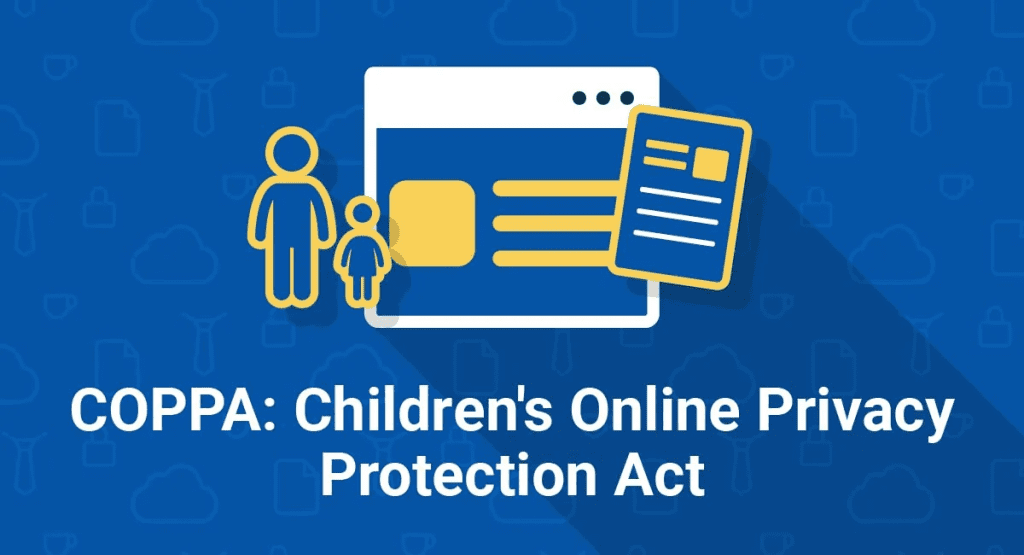
Monitoring and Enforcement
Establishing monitoring mechanisms and enforcing compliance safeguards against potential legal and ethical pitfalls.
Regular Audits
- Conduct regular audits of influencer content to ensure ongoing compliance with legal and ethical standards.
- Example: A proactive approach to monitoring prevented Fashion Nova from facing legal consequences when influencers failed to disclose sponsored posts.
Enforcing Ethical Guidelines
Clearly communicate ethical guidelines and enforce compliance through warnings and termination clauses in contracts.
7. Measuring Influencer Campaign Success

Key Performance Indicators (KPIs) for Influencer Campaigns
Establishing clear KPIs is fundamental for accurately measuring the success of influencer marketing campaigns.
Engagement Rates
Monitor likes, comments, shares, and other forms of engagement on influencer posts to gauge audience interaction.
Conversion Rates
- Track the conversion rates associated with influencer-generated content to measure the impact on sales and conversions.
- A study that 89% of marketers believe that investment in influencer marketing generates a higher ROI than other channels.
Analyzing Return on Investment (ROI)
Measuring the ROI of influencer campaigns provides valuable insights into their overall effectiveness.
Sales and Revenue Generated
- Attribute sales directly to influencer campaigns and calculate the revenue generated to quantify the financial impact.
- Example: Daniel Wellington’s collaboration with influencers contributed significantly to the brand’s revenue growth, showcasing the direct impact on sales.
Customer Acquisition Costs (CAC)
- Evaluate the cost-effectiveness of influencer campaigns by comparing customer acquisition costs to other marketing channels.
- Influencer Marketing Hub reports that brands can earn $5.78 for every dollar spent on influencer marketing.
Social Media Analytics and Tracking Tools
Leveraging analytics tools enhances the precision of measuring campaign success.
Platform-Specific Metrics
- Utilize platform-specific analytics tools to assess detailed metrics, such as reach, impressions, and demographics.
- Example: Instagram Insights provides comprehensive analytics for Instagram campaigns, including audience demographics and engagement metrics.
Attribution Models
Implement attribution models to understand the various touchpoints contributing to conversions, giving due credit to influencer interactions.
Brand Sentiment and Perception
Monitoring changes in brand sentiment helps evaluate the qualitative impact of influencer campaigns.
Social Listening
- Employ social listening tools to gauge shifts in brand sentiment and public perception during and after influencer campaigns.
- 68% of consumers appreciate the opportunity to engage with brands and companies on social media.
User-Generated Content (UGC)
- Assess the volume and sentiment of user-generated content inspired by influencer campaigns to measure brand resonance.
- Example: Apple’s influencer campaigns often lead to a surge in user-generated content, indicating positive brand sentiment.
Adjusting Strategies Based on Campaign Performance
Regularly evaluating campaign performance allows for strategic adjustments to maximize effectiveness.
A/B Testing
- Conduct A/B testing with different influencer strategies to identify the most effective approaches for your brand.
- Example: A beauty brand might A/B test influencer tutorials against product showcases to determine the preferred content type.
Iterative Improvement
- Continuously analyze campaign data and feedback to make iterative improvements in subsequent influencer collaborations.
- 89% of marketers who currently engage with influencer marketing will increase or maintain their investment in 2023.
Long-Term Impact and Brand Building
Evaluating the long-term impact of influencer campaigns goes beyond immediate metrics.
Brand Awareness
- Measure the long-term impact on brand awareness through metrics like search volume, brand mentions, and follower growth.
- Example: Coca-Cola’s longstanding collaboration with influencers has contributed to the brand’s enduring global awareness.
Brand Equity and Loyalty
Assess changes in brand equity and customer loyalty resulting from influencer campaigns over an extended period.
Conclusion
As we conclude our exploration of identifying the right influencers for your brand in 2024, it’s imperative to acknowledge the multifaceted landscape that influencers inhabit.
The spectrum is vast from mega-influencers wielding colossal reach to the authenticity-driven impact of nano-influencers. The emergence of virtual influencers and the strategic integration of employee advocacy add new dimensions to this dynamic realm.
In understanding the nuances of each influencer category, brands can tailor their collaborations to specific goals.
As we witness the rise of virtual influencers and the adoption of employee advocacy, the influencer landscape is in a constant state of evolution.
Brands embracing these trends position themselves at the forefront of innovation.
Crafting a Strategic Approach: The Foundation for Success
Building a strategic approach involves meticulous planning, from setting stringent criteria for influencer selection to analyzing metrics that drive impactful decision-making. Each step contributes to the overall success of influencer marketing campaigns.
The strategic alignment of influencers with brand values, coupled with an emphasis on engagement and content quality, ensures that collaborations resonate authentically with the target audience.
Data-driven decisions fueled by insights into follower demographics, engagement rates, and past collaborations empower brands to navigate the influencer landscape with precision.
Forging Lasting Relationships: The Pillars of Authentic Connection
The art of building lasting relationships with influencers goes beyond transactional collaborations. Effective outreach, transparent negotiations, and loyalty programs contribute to the authenticity of these connections.
The personal touch in outreach, transparent negotiations, and collaborative content creation lay the foundation for genuine influencer relationships.
Long-term brand advocacy is nurtured through loyalty programs and exclusive experiences.
Navigating Legal and Ethical Terrain: Safeguarding Brand Integrity
As brands navigate the legal and ethical terrain of influencer marketing, adherence to guidelines, protection of intellectual property, and transparency become paramount.
Familiarity with regulations, adherence to ethical considerations, and transparent collaborations safeguard brands from potential legal pitfalls.
Aligning with influencers whose values align with the brand and implementing robust influencer contracts mitigate legal risks, protecting brand reputation.
Measuring Impact and Adapting Strategies: The Metrics of Success
The measurement of influencer campaign success is a dynamic process that involves tracking KPIs, analyzing ROI, and adapting strategies based on insights.
Clear KPIs, ROI analysis, and social media analytics enable brands to quantify the success of influencer campaigns.
A/B testing, iterative improvements, and learning from both successes and failures contribute to the ongoing refinement of influencer marketing strategies.
Navigating the Ever-Expanding Horizon
As we bid farewell to this exhaustive exploration of influencer marketing in 2024, it’s evident that the journey of identifying the right influencers for your brand is a dynamic, ever-evolving endeavour.
In a landscape where authenticity, data-driven decisions, and ethical considerations reign supreme, brands equipped with the knowledge gleaned from this guide are poised for success.
The influencers of 2024 are not mere conduits for brand messages; they are strategic partners, brand advocates, and conduits for authentic connections.
Armed with this guide, brands can navigate the intricate influencer landscape with confidence, forging impactful collaborations, and leaving an indelible mark on the digital marketing landscape.
In the evolving narrative of influencer marketing, those who adapt, innovate, and forge genuine connections will undoubtedly emerge as trailblazers, shaping the narrative of brand success in the years to come.
If you are looking for a top-class digital marketer, then book a free consultation slot here.
If you find this article useful, why not share it with your friends and business partners, and also leave a nice comment below?
We, at the AppLabx Research Team, strive to bring the latest and most meaningful data, guides, and statistics to your doorstep.
To get access to top-quality guides, click over to the AppLabx Blog.
People also ask
How do I find the right brand influencers?
To find the right brand influencers, start by identifying your target audience, values, and goals. Utilize social media platforms, influencer marketing tools, and industry networks to discover influencers aligning with your brand. Evaluate engagement, authenticity, and past collaborations to ensure a meaningful partnership.
How do you identify key influencers?
Identify key influencers by defining your target audience, leveraging influencer marketing tools, and exploring social media platforms. Evaluate influencers based on relevance, engagement, authenticity, and past collaborations. Build relationships and ensure alignment with your brand values for impactful partnerships.
How do I reach out to influencers for my brand?
Reach out to influencers by crafting personalized messages, showcasing genuine interest in their content. Be transparent about collaboration details, emphasizing mutual benefits. Utilize direct messages, emails, or influencer platforms for effective communication. Build relationships gradually and foster authenticity.


























